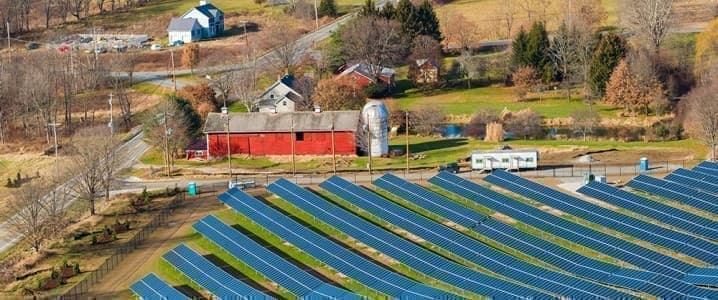The solar sector has enjoyed a jaw-dropping run-up in the current year. The sector’s sole pure-play solar fund, Invesco Solar Portfolio ETF (TAN), is up 234% over the past 52 weeks, with a good chunk of those returns having come after Joe Biden was declared the winner of the U.S. presidential elections a month-and-half ago.
That incredible momentum is certainly beginning to look like a big bubble in the making, considering that it’s hard to prove how the fundamental value of solar companies has more than tripled in the space of just 12 months. Although solar is mostly considered a growth industry, solar companies have generally recorded a smaller spike in demand as a result of the pandemic compared to work-from-home companies.
Yet, Wall Street remains very bullish on the sector and sees the rally extending for months and even years thanks to incredible growth runways as the solar industry ramps up infrastructure. U.S. solar power revenue is expected to more than double over the next five years.
And one secular trend is looking to completely redefine the solar sector: Community solar.
Whereas residential solar demand has exploded in recent years as more Americans try to play their part in ameliorating climate change, the harsh reality is that not everyone can have solar on their own roof.
Thankfully, community solar is about to make solar energy accessible to nearly every one of America’s 128 million households.

Source: Reuters
Community solar
For decades, residential power customers who wanted to switch to solar energy have been limited to two options: Installing their own solar panels or purchasing solar off the grid from their local utility.
Rooftop solar panels deliver plenty of savings for the average homeowner, with the average installation generally paying for itself within six to 10 years. Unfortunately, installation costs remain high, with the average system costs clocking in at ~$13,000 after tax credits. Further, whereas some solar plans require no upfront costs, they have the big drawback of locking the customer into multi-decade contracts.
But these are actually the lesser evils of residential solar; the biggest is that only about 23% of American households have ready access to rooftop solar. Related: Oil Rises As Market Awaits OPEC+ Production Decision
This sad state of affairs is due to factors such as living in rental houses or apartment buildings, tree shading, and restrictive homeowners’ association rules that affect about 49% of U.S. households.
The second option is not that attractive from a customer’s perspective, either.
Customers who choose to purchase solar energy directly from their utilities or retail energy suppliers do not enjoy the full benefits of falling renewable energy costs. While solar and wind are frequently the cheapest source of electricity in most places, most of these cost savings are not passed on to the customer but rather end up in the pockets of retailers--green energy plans merely pass on their green credits to customers, but offer minimal to no savings, with some even costing more.
Even more alarming is the fact that few such plans finance the actual construction of new renewable projects because customers sign on only after a project is already underway.
Enter community solar, a simple, even elegant, model that promises to deliver clean energy to anyone connected to the main grid for less than their current utility bill.
There’s no national standard yet for what constitutes a community solar program, but the basic premise is that customers purchase shares in a new solar farm in their service area; developers build it, and the electricity generated flows into the main grid. These subscribers then receive credits that cut their utility bills by about 10%.
Community solar provides flexible contracts that deliver energy savings by constructing large-scale solar arrays. Developers sign up customers months ahead of time, with many solar projects completed in a year or less. Many plans allow customers to cancel with a few weeks’ or months’ notice. Related: China’s Oil Giants Face NYSE Delisting
Some providers require a credit score, but many do not. For instance, Solstice, a company that works with community solar developers, uses an alternative to FICO credit scores that allows customers with less-than-stellar credit scores to enjoy the benefits of community solar. Solstice has even introduced a “no-risk” contract that lasts just one year.
That kind of flexibility and friendlier contract terms have been lacking in a sector that favors stable, long-term contracts that guarantee investors continued returns on their investments.
Going mainstream
Despite being a decade old, the concept of community solar has only recently started to truly take off.
Currently, community solar accounts for 2GW of the 76GW installed solar capacity in the U.S. Community solar is available in 40 states though only 20 states and the District of Columbia have passed community solar legislation. The average discount off utility rates on its community solar marketplace is about 10% but goes as high as 20% in New York, thanks in part to a more mature, competitive market.
The good news is that several analysts believe that community solar is set to become the most prevalent model of residential solar power distribution in the country, with Vikram Aggarwal, founder of EnergySage, a home solar marketplace, predicting that a large majority of the American population will have access to community solar in the next few years.
Aggarwal argues that community projects could force complacent utilities to start delivering on popular demand for renewable power or risk losing customers altogether.
J.R. Tolbert, MD at Advanced Energy Economy, concurs:
“The best action states can take on community solar, rooftop solar, or utility-scale renewable energy is to ensure a vibrant third-party market, where the utility competes for the consumer’s business rather than controls it.”
By Alex Kimani for Oilprice.com
More Top Reads From Oilprice.com:
- A Silver Lining For Kazakhstan Oil In 2020
- The Middle East Needs To Wake Up To Renewables
- The Russian Energy Giant Mining Bitcoin With Virtually Free Energy


















